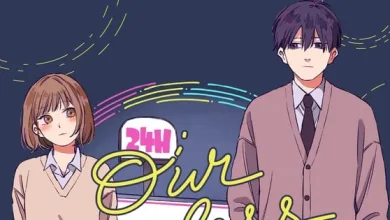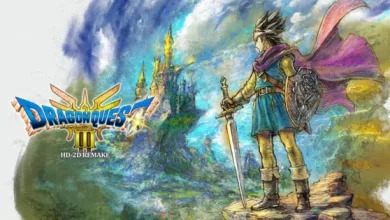Macross Frontier Anime Series Review – Review

Until very recently, being an English-speaking Macross fan has been hard. Thankfully, with the resolution of a long-standing legal dispute regarding international distribution rights, we’re finally (slowly!) getting some of the more recent Macross anime in the West. I’d wager the vast majority of modern anime fans have little to no knowledge (or even interest) in the long-running Macross franchise. That’s a crime I’d place firmly at the feet of U.S. company Harmony Gold and their stubborn insistence on repeated (failed) attempts to Keep Making Robotech A Thing.
While 1995’s 49-episode Macross 7 TV anime would have seemed to be the most obvious choice for the next English-language Macross release, Disney+ surprised us all by shadow-dropping both 2008’s 25-episode Macross Frontier and 2016’s 26-episode Macross Delta onto streaming in the U.K. and Australia back in July, with minimal fanfare or advertising. That’s just how Disney mismanages anime in the West. Now that Frontier and Delta are also streaming in Canada, there’s yet no indication of when they might eventually stream on Disney-owned Hulu in the U.S.
The Three Pillars Of Macross are flashy space battles featuring transforming mecha, idol singers in brightly-colored outfits, and love triangles. Macross Frontier is crammed to the brim with all three, a phantasmagorical mix of the “most anime” of ingredients. Show this to a non-anime-fan friend, and they’re either likely to need to lie down with a pounding headache or become a rabid fan for life. Macross as a whole is a lot, and for that, I love it with all my heart. Macross Frontier is full of such moments, juxtaposing insanely kinetic CG battles between entire armadas of mechs spewing luminously trailed guided missiles at one another, with the energetic dancing and singing of both Sheryl Nome and Ranka Lee.
Sheryl is a seemingly spoiled, impulsive, confident, and glamorous interloper who sets her sights on the often moody Alto, disrupting his nascent relationship with the far more shy girl-next-door-esque Ranka. Like many popular anime heroines, Sheryl knows what she wants and pursues her goals aggressively. While it seems most Macross Frontier fans tend to favor Sheryl, I prefer Ranka’s sweeter, more innocent personality, even if she can be gratingly childlike at times. Interestingly, they develop a mutually supportive personal and professional friendship despite their rivalry in both love and the music industry. Theirs is a love triangle refreshingly free of histrionic cattiness and back-biting. It would almost be understandable for them to ditch Alto and shack up together instead.
For good reason, Alto is generally accepted by fans as one of the least popular Macross lead characters. His communication skills are essentially absent and he’s prone to sulking, most often presenting as standoffish, even rude. He seems oblivious to either Sheryl or Ranka’s romantic overtures, and his boneheadedness leads him repeatedly into completely avoidable trouble. His backstory is interesting but isn’t explored in quite enough depth. Alto’s schoolmates’ nickname for him is “Hime” (Princess), a reference not only to his long, flowing locks and feminine appearance but to his history of playing female characters in his family’s kabuki theater (an art form traditionally performed only by male actors). His irritation at his peers’ repeated use of this derogatory (to Alto) term certainly contributes to his generally dour presentation. Thankfully, Macross Frontier‘s other lively characters are enjoyable enough to cover its protagonist’s flaws.
Idol music comprises a vast aspect of Macross Frontier‘s charms, so viewers must be willing to buy into the outlandish concept that cynically manufactured pop will one day have the power to save humanity from marauding alien forces. Not every song performance accompanies a mecha battle, though most battles feature songs. Performances vary from quaint, faintly embarrassing (for the characters) street-level singing to massive pyrotechnical stadium opuses. The quality of the music (composed by the legendary Yoko Kanno, no less) is uniformly excellent, with countless insert songs, four distinct opening tracks, and no less than twelve (twelve!) ending songs, though some of these are variants. Ranka’s mysterious ballad Aimo does get overused in comparison to the others, while my personal favorites are Ranka’s Interstellar Flight (OP for episode 17) and Lion, a duet between Ranka and Sheryl (OP for episodes 18-24). Lion, in particular, captures the series’ heady mix of urgency and emotion with its soaring strings and high tempo. These songs are instrumental in making the viewer fall in love with the characters and the show.
While the first half of the series is relatively episodic, the overarching meta-plot kicks into gear in the second half, with most episodes featuring spectacular space battles utilizing only slightly dated CG. They still look great, especially the timeless design of Macross‘ transforming Valkyrie fighters, while the menacing red Vajra fighters are incredible, too. Sometimes, the action is so dizzyingly full of missile trails and spinning camera movements that it’s a little hard to tell what’s happening! Away from the battlefield, there’s a slow-burning conspiracy plot that isn’t fully explained until almost the end, which means early episodes include scenes between supporting characters that don’t make a considerable amount of sense in context. This isn’t as complicated or esoteric as Evangelion, though; it’s more of a standard mech show.
Compared to the later duology of Macross Frontier movies, the TV show has more room to breathe and develop its plot and characters. This is especially notable in the first half, where Ranka is given much more screen time and development than she was permitted in the films. The movies also tell a wildly different story with a completely different ending. It’s well worth watching both versions, though I do suggest watchingMacross Frontier (TV) first, if only to get a good grounding in both characters and setting. One of my only significant criticisms about Macross Frontier (TV) is in regards to the resolution of its central love triangle – it doesn’t have one. Spending twenty-five episodes watching romantically inept Alto bumble between two adoring women feels like a waste of time when the final episode refuses to make him commit. That’s left for the movies, which operate on a completely different timeline. I admit to screaming at the TV at the end of the final episode.
Unresolved romantic tension aside, Macross Frontier is a hell of a good time and a reminder of why anime is such a fantastic storytelling medium in the first place. What other media dares to mix fighter pilots exploding monstrous aliens with dainty teenage girls singing poppy show tunes? Super Dimensional Fortress Macross was a trailblazer, and Macross Frontier ably continues what its predecessor started. Previous Macross knowledge certainly isn’t a prerequisite – new fans could easily start here. Everything one needs to know is explained either in-universe or from narration during episode openings. Give Macross Frontier a chance. Don’t let distributor mismanagement get in the way of the tremendous success this wonderful franchise – and you as a wonderful viewer – truly deserve.
Source link
#Macross #Frontier #Anime #Series #Review #Review


